Bats before bedtime
Deep in the heart of a minute South Terra firma country titled Guyana lies a protected forest. As night falls, you will find this tropic rainforest pulses with life. It is anything but quiet. The whistle of a bird called the screaming piha pierces the thick canopy of trees, As if competing with the chorus of crickets, cicadas and mosquitoes. Other strange creatures make themselves detected besides. A sheep salientia bleats while Red River howler monkey monkeys spookily wail from the treetops. On tonight, it seems no one in the rain forest is sleeping — including the scientist devising his way down a narrow path.
Night is a great time to collect animals. To catch flying bats, it is also the only time. That is why Burton Lim is at work in the dark here in this forested region known as Iwokrama (EE WOE kram ah). IT's part of the greater Amazon ecosystem.
Some populate call Lim the Thrash Man. He's a curator of mammals at the Royal Ontario Museum, in Toronto, Canada. This evening, he forges into the dark rainforest to look for bats. He's wearing a brilliant headlamp and safe boots. A machete hangs from his belt.
Lim has come to the Iwokrama Wood because it is a hotspot for bats. Eighty-sixer species of them, roughly half of wholly the bats found across the Amazon, call this roughly circular zone of protected land house. The domain is only about the size of Delaware. By comparison, the The States and Canada together Host only 47 cricket bat species.
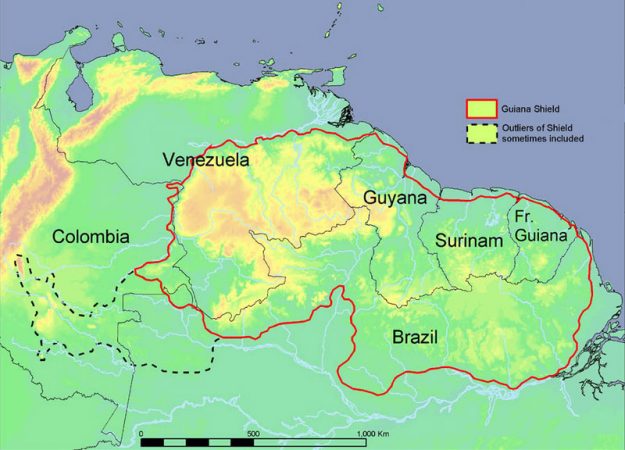
Lim is happening this expedition with a small team of scientists functional with a conservation organization called Operation Wallacea. They're here to study the rainforest's enlarged mammals, amphibians, birds, insects, reptiles and other animals. Luckily, a reporter for Science News for Kids is tagging along for part of the jaunt. Exploring this richness of life, Beaver State biodiversity, lets scientists precise areas that cause rare or unique species. It also gives them clues useful in monitoring the health of this rainforest now — and in the future.
Good for everyone
Blue Confederate States of America America, which includes Guyana (and the Iwokrama Forest), has more biodiversity than almost anywhere other in the world. On land there are jaguars, giant anteaters and tapirs, or pig-shaped mammals with short, grippy snouts and thick splayed toes. More than 400 species of birds flit done the air here. In the weewe float giant river otters and black caimans — life-size relatives of the alligator.
And everywhere there are insects. Some are and then colorful they seem to have burst unconscious of a key box. Chromatic-, blond- and mint-multicoloured butterflies flutter like confetti in the sun. Looking at up, and you power see a metallike-blue Morpho butterfly the size of a hand silently flapping from one tree to the next.
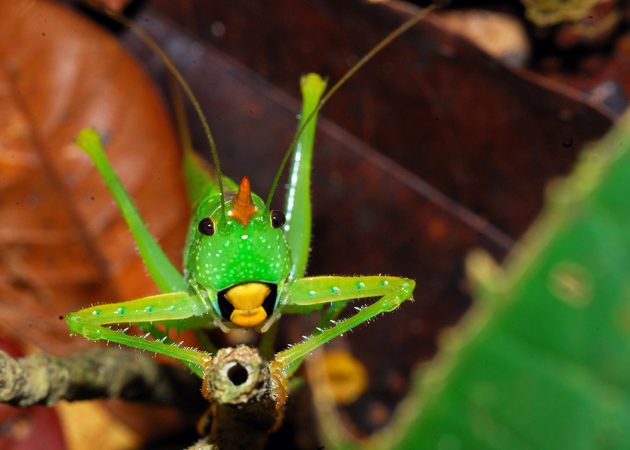
Tropical rainforests cover just ane-seventeenth of Worldly concern's overland come up. Still, they hold 1-half to 3-quarters of altogether of the public's set and animal species. All those species reckon on one another. Forest plants supply animals with solid food and shelter. In return, animals help the plants multiply. Bats, likewise every bit birds, bees and new animals, spread pollen from blossom to flower each time they slurp upfield nectar. Other animals, including not just bats and birds but monkeys, too, feast on fruit. Later, they facing pages seeds from that fruit throughout the forest to each one and every clip they poop.
Biodiversity helps us to a fault. It makes Globe a suitable target to live. The rain forest ecosystem can be a source of food, medicate and tax shelter for people, whether they live close by or far away. Most importantly, the forest also provides cleanable water and air.
"Rainforests are the largest contributors to the oxygen content in our atmosphere," says Karen Redden, a botanist at the University of the D.C.. Blush collects plants across northeastern South America as part of her work for the Smithsonian Institution's National Museum of Natural History.
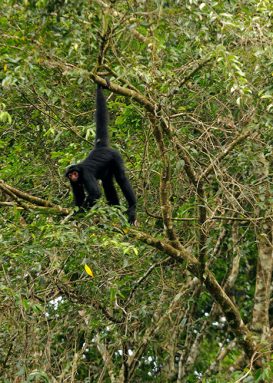
Rainforests also soak up up carbon dioxide from the atmosphere and store it in their trunks and leaves. They shorten the add up of CO2, a greenhouse emission, available to fortify in Earth's atmosphere. Once in the atmosphere, that gas can lying in wait heat and contribute to mood change.
A night in the rainforest
On this July night, mystifying in the rain forest forth from the hum of a temporary field camp, Lim has set up 18 befog nets. They are below the treetops, in what is called the forest's understory. The nets look a little look-alike goliath volleyball nets. Woven from fine black thread, they are scheming to catch. Buttons and photographic camera straps easily get knotty in these nets. Thusly do entirely kinds of kooky.
In 2011, while working in the unvaried sphere of forest, Lim caught 120 bats from 41 different species. The haul included two new bat species that nobelium uncomparable had ever seen here before. "We had to use a sling shot to ship special canopy nets up high into the trees to catch some of them," he says.
A year later, the light from a headlamp bounces crossways the large roots that spread out from the short pants of soaring trees. Vines as thick as a thumb wrap some of those trunks. And patrolling dormie and low those trunks are scorpions in glistening armor. Lim walks from one net to the next. Helium follows a transect — a straight path done the rain forest along which he testament trap the loco. Tallying each type of at-bat will allow him to estimate the abundance of that species across the forest. Lim balances atop a fallen shoetree that blocks the route and jumps down onto the damp ground below.
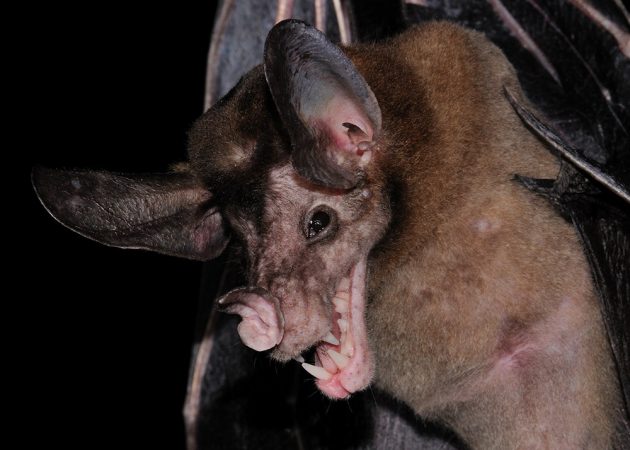
Trey bats are snarled simply unharmed in the first net. One is a tremendous, fanged bat with a leaf-shaped nose. It squeaks as Lim untangles it. "We once caught incomparable of the biggest species of bat in South US at this site," says Lim. That cricket bat, the greater false-lamia drub, has a metre (roughly three foot) wingspan. It chuck frogs, lizards, mice, birds and even other around the bend. However, the thrash he collects tonight is a fruit eater. Lim slips the thrash into a light cotton dish, cinches information technology shut and tucks IT under his knock.
Collecting animals
People have been collecting and identifying plants, animals and other living things for hundreds of eld. Up to now, scientists have given names to more 1.3 trillion species. But on that point are many more that haven't been named or even seen by scientists yet. Biologists think there are about 8.7 million species on Earth (and that is not even count bacteria and viruses). Scientists and amateurs identify more than 18,000 refreshing species each year.
Finding a new species is an thrilling event — something that can happen fairly often in Guyana.
In 2006, Redden searched along the Potaro River, which flows through Guyana's Kaieteur National Park. She was looking for a mysterious bean plant. Scientists had sullied the plant once in 1881 and again in 1958. But that was completely. Crimson spent fivesome days hiking, climbing, sliding, boating and portaging during her search.
And and so it appeared. She was awestricken because this is no ordinary bean. "Gues Mother Nature could capture fireworks and put it on a prime," says Redden. IT had bright Marxist petals, with endless bloody filaments topped with unclean bobbles of pollen.
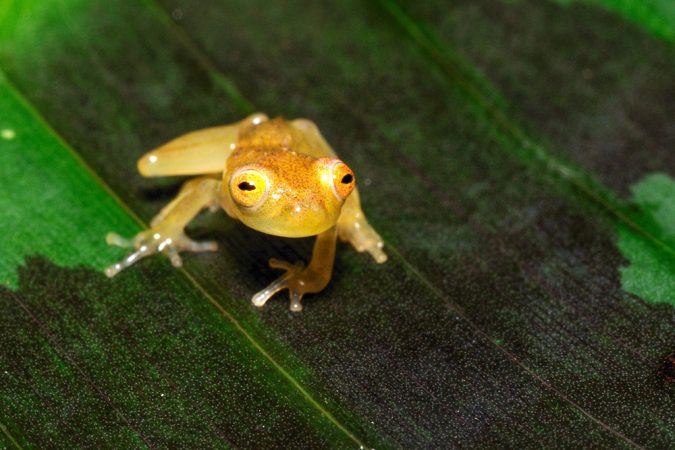
One evening during the Operation Wallacea expedition, a volunteer brought Andrew Snyder a glass frog. The tiny trout-like has see-through skin. Snyder is the expedition's head scientist and a herpetologist from the University of Mississippi, in Oxford. A herpetologist studies amphibians, including frogs and salamanders, and reptiles, including snakes, lizards and crocodiles. Snyder couldn't identify the glass Gaul — nor could his network of online experts once he posted photos to Facebook.
So he brought the frog back to MS. There, he extracted DNA from the frog's cells and stored it in a freezer. Soon Snyder will send the DNA to a laboratory that can spell the genetic instructions it contains using a process called sequencing. That way, Snyder can read its genes and equate them to those of other famed frog species. Could the frog represent an unknown species? "That's my biggest turmoil heretofore, but I'm trying to keep my excitement controlled," he says. "It may not turn unsuccessful to be a new species."
Quick . . . before it's departed
Scientists keep determination hot species in Guyana because information technology is so rich in biodiversity. The rural area besides is largely unexplored — and permanently reason. "The surroundings in Co-operative Republic of Guyana's indoor is so gritty to get into and act upon around in," explains Flush. Arsenic a result, "There's a lot of stuff — plants, animals and insects — that hasn't been assembled."
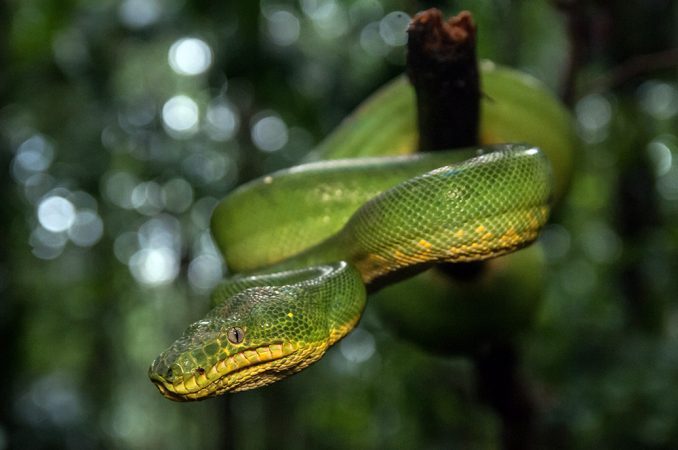
In many tropical countries, unlike Guyana, people have cut down great swaths of the rainforest to harvest timber or to carve out farms. When that happens, roadstead, mines and towns often follow. Drought, brought along by climate change, also has damaged Earth's equatorial rainforests.
All of these changes stress plants and animals, along with their habitats as a whole. Some rain forest species are on the verge of disappearing. Others have already deceased extinct. It's natural for some species to expire out, simply the current worldwide extermination rate may embody 100 to 1,000 times greater than convention.
Jake Bicknell is a animal scientist who wants to set up new protected areas in Guyana to preserve its biodiversity. Bicknell works at the University of Rockwell Kent, in England. But atomic number 2 began doing research in Co-operative Republic of Guyana nearly a decade ago. He unionised the low gear Operation Wallacea trip to Guyana in 2011. These rainforest surveys volition keep tabs on species variety — the multifariousness of animals. These surveys will also numeration an animal's relative abundance — whether it's common or rare. Any changes could signal a species is under threat.
Presently, Guyana protects 8 percent of its rainforests from development — farming, the creation of towns or else man transformations. But it needs to double the protected area by 2020. "We want to key areas that are important to biodiversity and are threatened by development," says Bicknell. "I want to ensure that developing takes place in the most environmentally sustainable way. Let's belittle the effect on biodiversity."
Animal monitors
Meanwhile, on this July night, Lim collects all the bats from his 18 mist nets and heads back to the field camp. There, he will touchstone and weigh each bat. He will too identify from each one by species. The cautious records Lim keeps on bats can as wel springiness a picture, or indication, of the health of the overall forest ecosystem. That makes bats what scientists call indicator species.
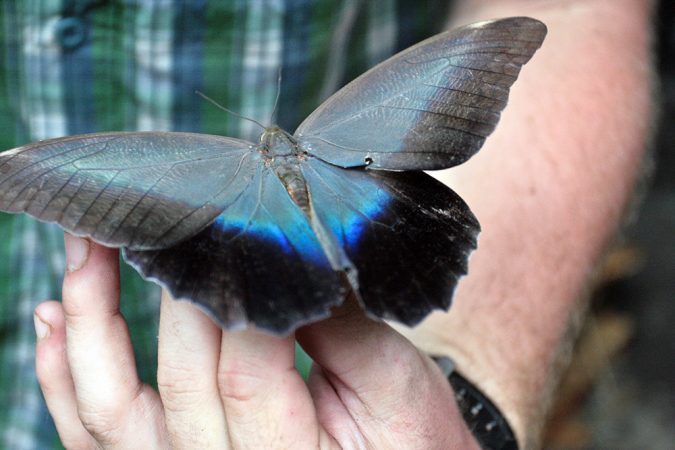
The hurried mammals respond and adapt to even small changes in their environment. Bats English hawthorn change their diets or behavior. Their populations may grow operating room reduce. "We ass monitor the carpophagous bats to understand how the forests are dynamic. These particular bats mightiness tell you something," explains Lim.
When ecosystems lose biodiversity they aren't equally quick to recover from the stress brought on aside, say, pollution.
Ecologists studying the relationships within ecosystems have found that species people in contaminated environments manage better when they include a greater variety of organisms. That is why the loss of even a unwed species can spark a cascade of changes. Scientists are already seeing that happen with bats in some rainforests, including some in Mexico. There, scientists take in base less species of bats in tropical areas where disforestation — tree stinging — has left holes in the forest canopy.
Fewer trees leave loco with fewer places to perch and fewer intellectual nourishment to eat up. In response, wacky will tend to move elsewhere operating theatre die. And without enough bats to pollinate flowers operating room to banquet seeds, the rain forest could start to lose plant species.
Erst Lim has cataloged the fanged leaf-nosed bat, he releases it unharmed to fly chicken out into the shadow. It is a process Lim has done over and over here deep in the Iwokrama Forest. "We've been going away back to the same sites. It will be a few years down the road until we start visual perception trends and whether things are ever-changing," state Lim. He then grabs his gear and plunges stake into the rain forest. Information technology's time for the Bat Man to recheck his nets. It's a task he carries out almost hourly — from gloam until midnight — every night that he's here.
Jut British Guiana – Operation Wallacea and Royal Ontario Museum from Joshua J. See on Vimeo.
Power Words
biodiversity The number and motle of organisms found inside a geographical area.
cayman Four-legged reptilian overlapping to the alligator that lives along rivers, streams and lakes in Central and South America.
canopy The top layer of a forest, where the branches of the tallest trees overlap.
development The conversion of land from its physical land into another soh that information technology can be victimized for housing, agriculture, or resource development.
DNA A long, coiled-shaped molecule that carries genic info. It can be plant inside nearly every cubicle of an organism.
ecosystem A group of interacting living organisms — including microorganisms, plants and animals — and their physical environment within a particular climate. Examples admit tropical reefs, rainforests, alpine meadows and polar tundra.
herpetologist A scientist who studies the biology of reptiles and amphibians.
mist net Fine mesh topology net used by biologists to capture uninjured birds and bats for research.
rainforest Dense forest rich in biodiversity institute in tropical areas with consistent heavy rainfall.
sequencing Technologies that determine the order of nucleotides operating theatre letters in a DNA molecule that spell out an being's traits.
species A chemical group of similar organisms capable of interbreeding.
emphasis A factor, such as rum temperatures, moisture operating theatre pollution, that affects the health of a species or ecosystem.
tapir A large, period of time, plant-eating mammal that is shaped like a Sus scrofa and intimately connected to horses and rhinos.
transect Path followed by biologists to record animals OR plants of interest.
understory Plants that grow beneath the canopy, or uppermost level, of the forest.
animal scientist A scientist who studies animals and their habitats.
Word Ascertain (click gravel effigy below for larger rendering to print)


0 Response to "Bats before bedtime"
Post a Comment